I tested Hisense’s 116-inch RGB-MiniLED TV, and it’s better than any other TV in this one key way
A room-filling TV with a bank account-emptying price
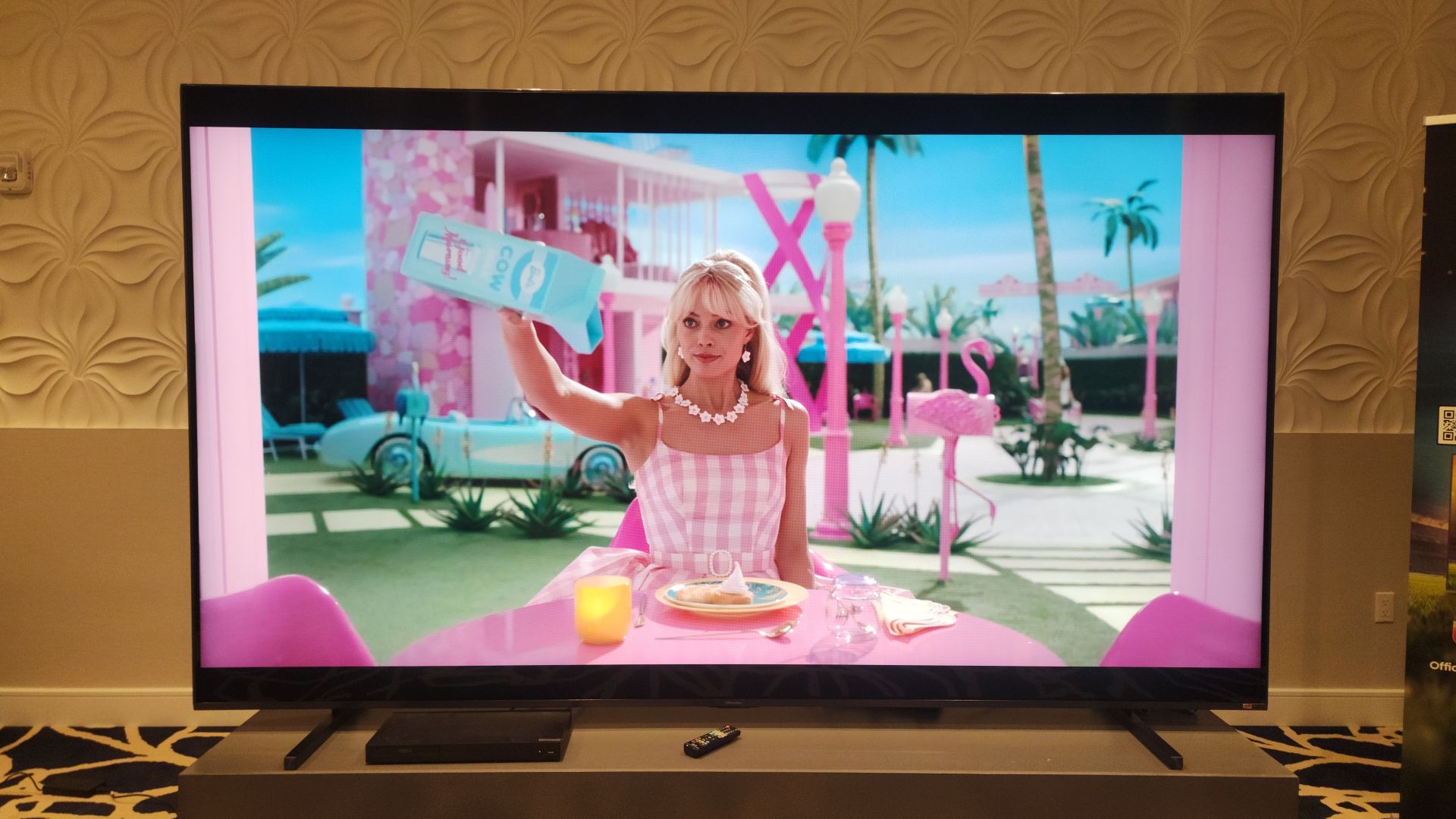
The Hisense 116UX is the company’s latest attempt to create a bigger and better example of the best TVs. In addition to measuring a dizzying 116 inches, making it one of the largest TVs I have encountered in more than eight years of testing them, it also utilizes Hisense’s new RGB-MiniLED backlight technology.
This is designed to bring with it amazing color that, when paired with the set’s intense brightness, delivers the perfect picture for your home theater.
Assuming you have the money to buy the TV and the space to house it, is it worth the trouble? I recently went hands-on with the 116UX at a testing event to find out. Read on to see what I discovered both with my TV-testing equipment and my eyes as they took on one of the biggest TVs you can buy.
Big size, price, promises
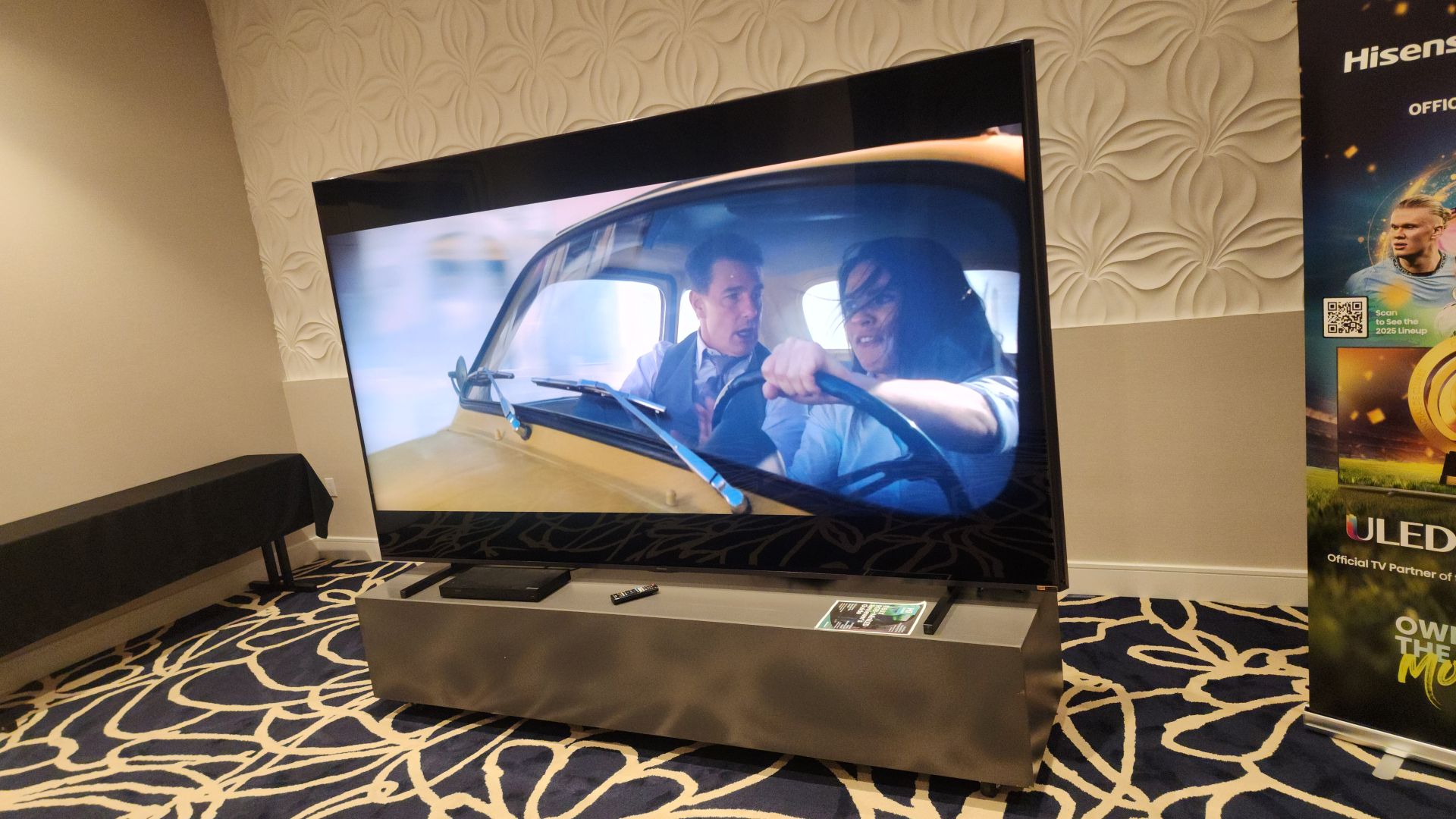
“It’s not for everyone” is a frequent mantra in product reviews of any kind, but it’s especially true with the Hisense 116UX. Because it measures 116 inches diagonal, it’s huge in every other way, too. Not counting the stand, its dimensions are 103.6 x 58.6 x 1.6 inches (2631 x 1488 x 41mm), and it weighs just under 225 pounds (102kg) – unpacked.
Just to get it where it’s going, you’ll need a way to deal with its enormous box (114.2 x 68.9 x 11.2 inches, with a 371.5-pound total shipping weight), meaning some elevators might even be too small for it. You will definitely want to plan ahead.
Of course, if you’re even looking at this TV in the first place, chances are you have a house with a dedicated room for it, since the Hisense 116UX does not come cheap. Its list price is $29,999.99 (around £22,400 / AU$46,000), but you may be able to find it for as little as $24,999.99 on sale.
(It’s worth pointing out that Hisense is pushing value even here, as that’s less than you’d pay even for a 98-inch TV from some other manufacturers, though it’s enough to give Scrooge McDuck a heart attack no matter what.) You can currently purchase the Hisense 116UX from online retailers in the US (I found it at Best Buy), although my Hisense contacts indicated that it won’t ship until the end of July.
Sign up for breaking news, reviews, opinion, top tech deals, and more.
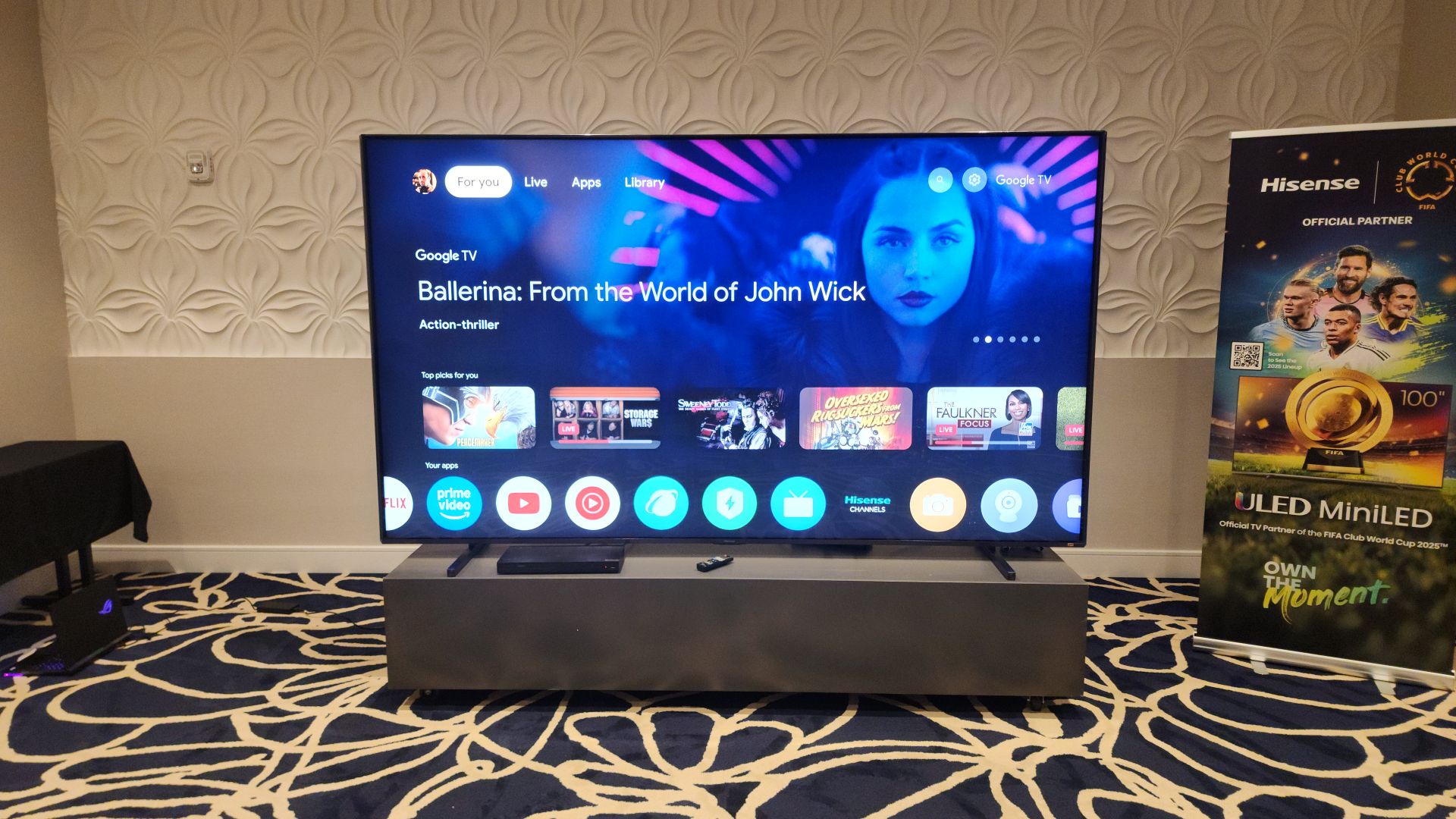
Hisense has heavily touted the 116UX’s new RGB-MiniLED technology, which transforms the local dimming backlight through its use of red, green, and blue LEDs (more than 20,000 of them) instead of the standard blue and white. This, the company said, results in “the most realistic color,” with “ultra-sharp contrast and purest hues.”
There’s more to a picture than just the color, though, and Hisense claims its Hi-View AI Engine X, “driven by Deep Neural Networks,” analyzes and enhances the picture in real time to ensure it always looks its best. Anti-Reflection Pro, “a special coating into the liquid crystal layer of the screen,” is on hand to reduce screen glare and reflections. And because the panel supports Variable Refresh Rate (VRR) up to 165Hz, you should get good gaming, too.
Hands-on with the 116UX
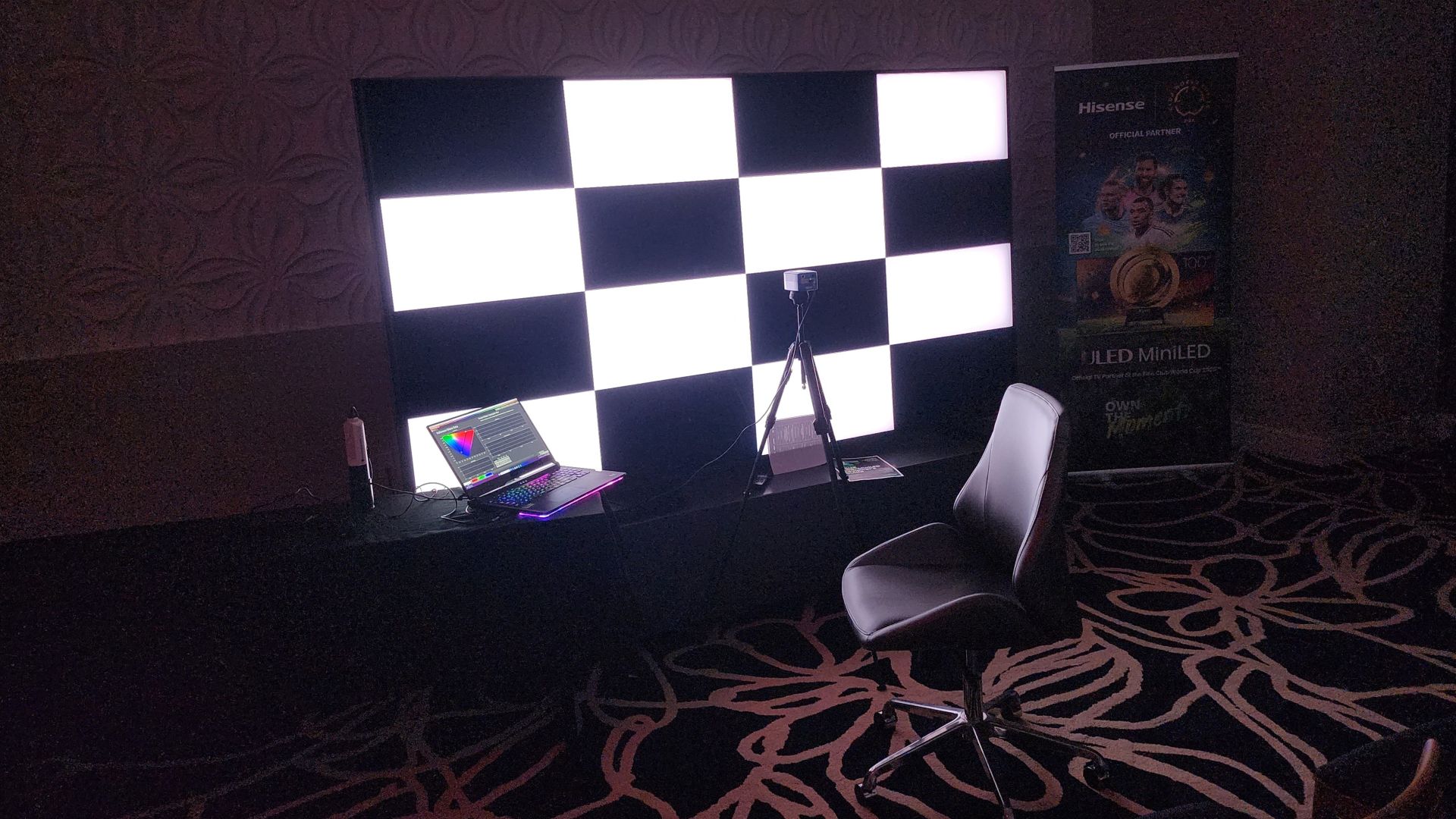
During Hisense’s invited testing event in New York City in early July 2025, I had the opportunity to spend two hours with the 116UX to do both technical testing (with my Jeti 1501 spectroradiometer, Klein K10-A colorimeter, Murideo 8K-Six-G pattern generator, Portrait Displays’ Calman TV-calibration software, and a Leo Bodnar 4K Input Lag Tester) and subjective viewing with a variety of content.
In terms of raw numbers, the 116UX absolutely delivered. I measured SDR brightness up to 6,014 nits (Vivid mode, in a 10% window), and HDR brightness came in just the tiniest bit less (5,441 nits in Filmmaker Mode, also in a 10% window). But even when tested full screen, the 116UX put out more than enough light (1,090 nits, in Filmmaker Mode) to illuminate the whole conference room I was in, undoubtedly due to its sprawling screen real estate.
(It’s worth noting that Hisense rates the 116UX for up to 8,000 nits of brightness. Try as I might, I couldn’t get that, but Hisense engineers told me that you’ll see that on a maximum of 2-5% of the screen after the TV has been warmed up for about two hours. As I was the first visitor of the day, I could not match these exact conditions, though based on my measurements and previous experience with high-end Hisense TVs, I find those claims completely believable.)
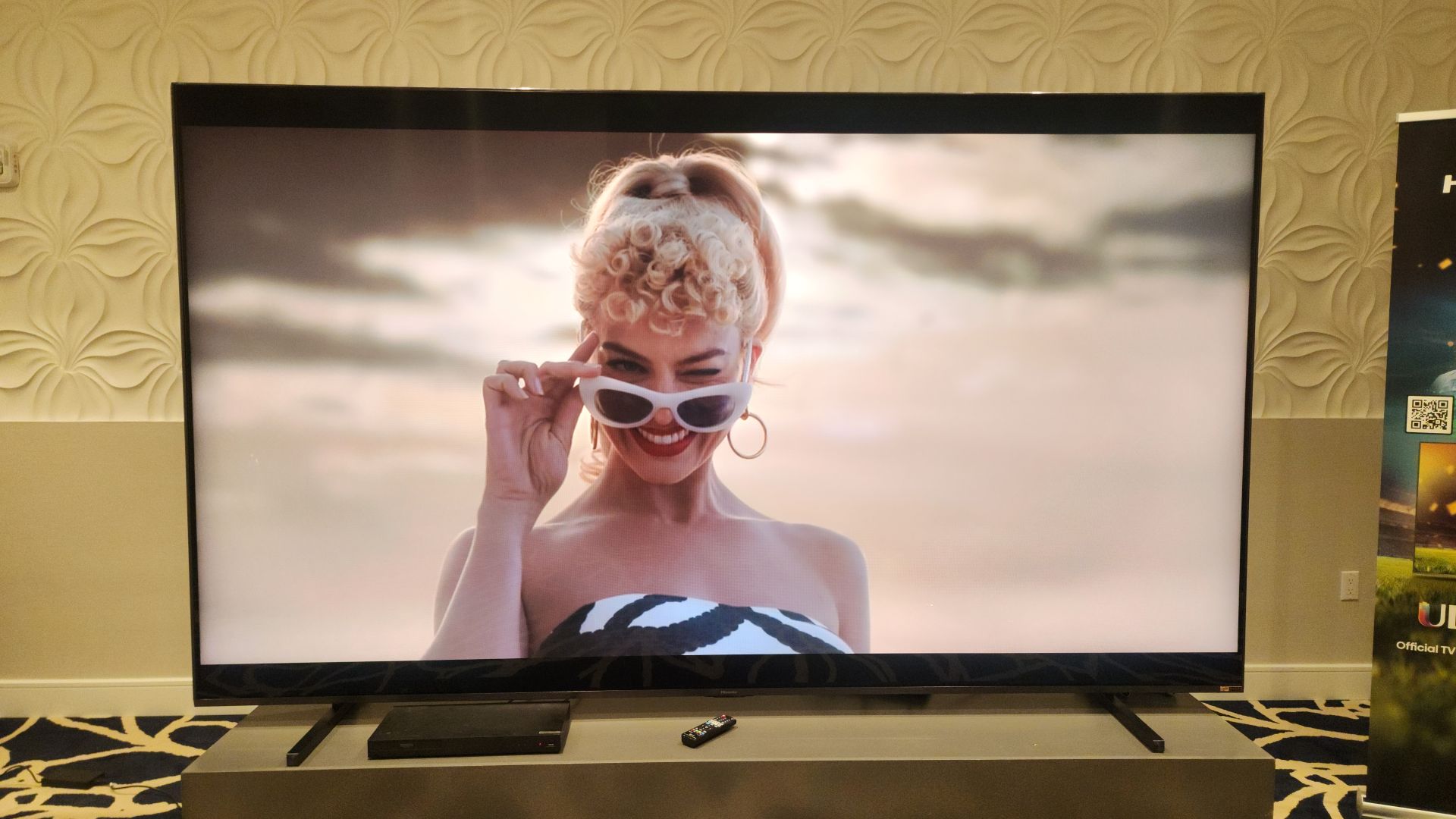
Registering a Delta-E of 3.23, the 116UX isn’t the most color-accurate TV I’ve seen, though that number is still more than sufficiently low. Its color gamut coverage, however, was another story. The 116UX covered 99.39% of the UHDA-P3 color gamut, which is excellent but not a towering accomplishment these days.
But when it came to the wider BT.2020 gamut, the 116UX registered a shocking 92.64% – by far the highest result I have encountered from any of the hundreds of TVs I have tested. There’s still not a lot of BT.2020 content out there, but when there is (and that’s always expected to change within the next year or two), you won’t find a TV more future-proofed for it than the 116UX.
When it comes to input lag for gaming, the 116UX’s result of 14.6ms is a bit higher than we see from the best gaming TVs from Samsung and LG (which frequently are in the low 9ms range), but anything less than about 16ms means it’s working faster than the frame itself, so gaming performance should be appealingly smooth.
In assessing how a TV handles real-world video, I typically work through a collection of recent movies in a variety of genres. With these, the 116UX looked very good, but just shy of great. The set really excelled on Dune: Part Two and the black-and-white scenes of Oppenheimer, where shadows and contrast are key to the overall mood.
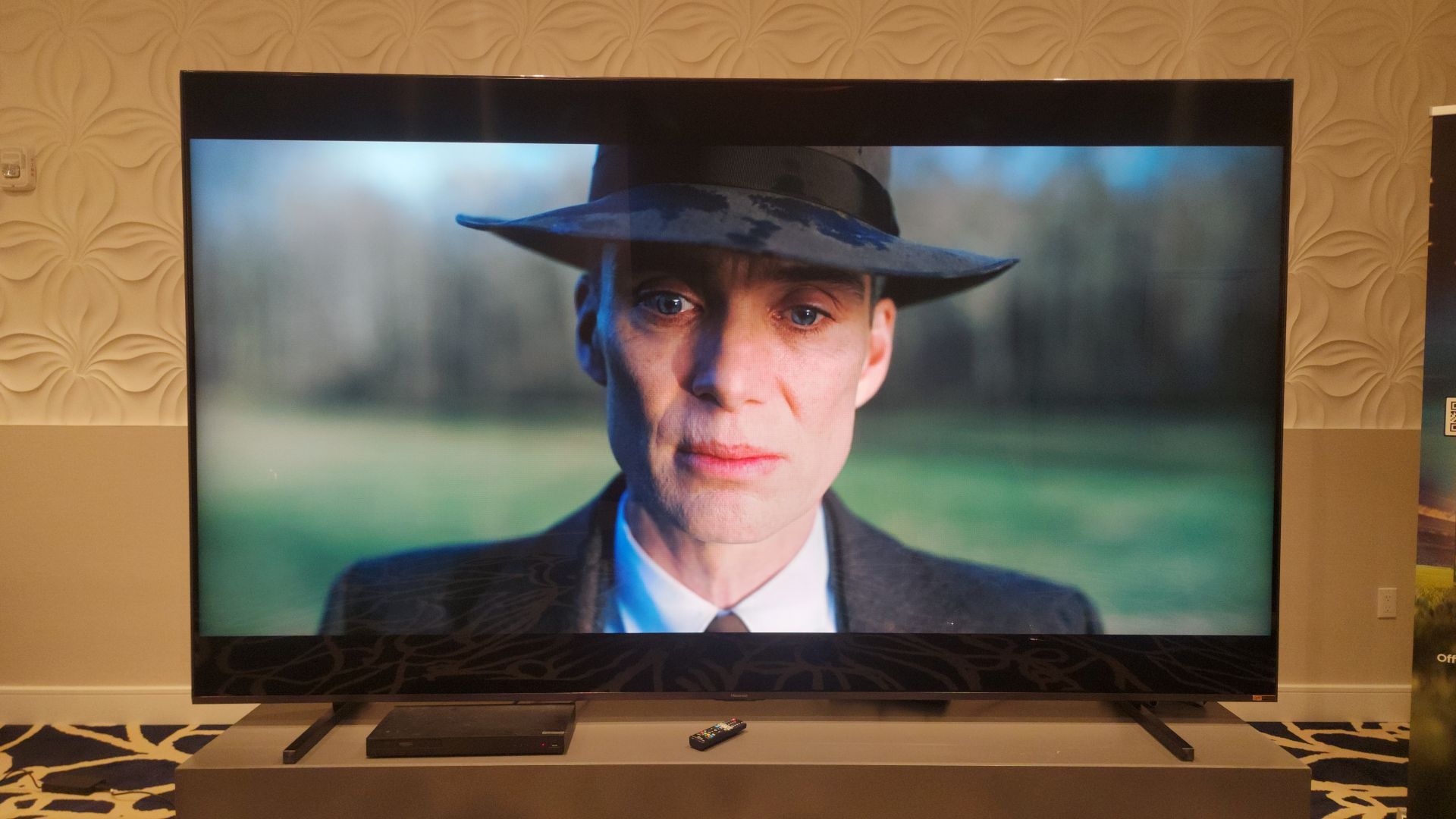
Animated movies looked delightful, whether from the more traditionally designed The Super Mario Bros. Movie or the more forward-thinking Spider-Man: Across the Spider-Verse, which looked as intense and engaging as I’ve ever seen it.
But, at least in Filmmaker Mode, color-rich live action didn’t “pop” as much as I would have liked. You saw the glorious range of hues defining Elphaba’s emerald skin or Glinda’s rose nightgown in Wicked, for example, or the pink explosion of the first 10 minutes of Barbie, along with the candylike set design that followed throughout.
But whereas some TVs can overcome the natural and intended lower brightness of Filmmaker Mode (which is tuned to be as movie-theater-accurate as a non-calibrated TV can be), the 116UX falls just short. I didn’t see it all the time, but I did sometimes, in Deadpool & Wolverine, for example, which has its own kind of explosive color palette and looked terrific.
I also noticed an intermittent problem with faster action, which I’ve encountered on Hisense TVs before. Again, in Filmmaker Mode, the picture does tend to get a bit muddy when a lot is happening on the screen. I noticed this during the Rome car chase sequence in Mission: Impossible—Dead Reckoning, when Tom Cruise and Hayley Atwell’s fast turns down the twisted streets and twisting steep stairs resulted in a momentary lack of motion clarity. As this was the only time this popped up, it may not be an everyday issue (and another picture mode might smooth it over), but it’s something to be aware of.
So, too, is the fact that you will need to consider the 116UX’s placement very carefully. Because of how big the TV is, you need to sit fairly far back from the screen to see it at its best. The chairs in Hisense’s testing setup were placed 7-8 feet back, and it was not enough – even perfectly rendered 4K images frequently looked blocky from that distance. From 12-15 feet away, the picture looked much crisper, though of course that means you’ll need to put the 116UX in a room that’s that much larger.
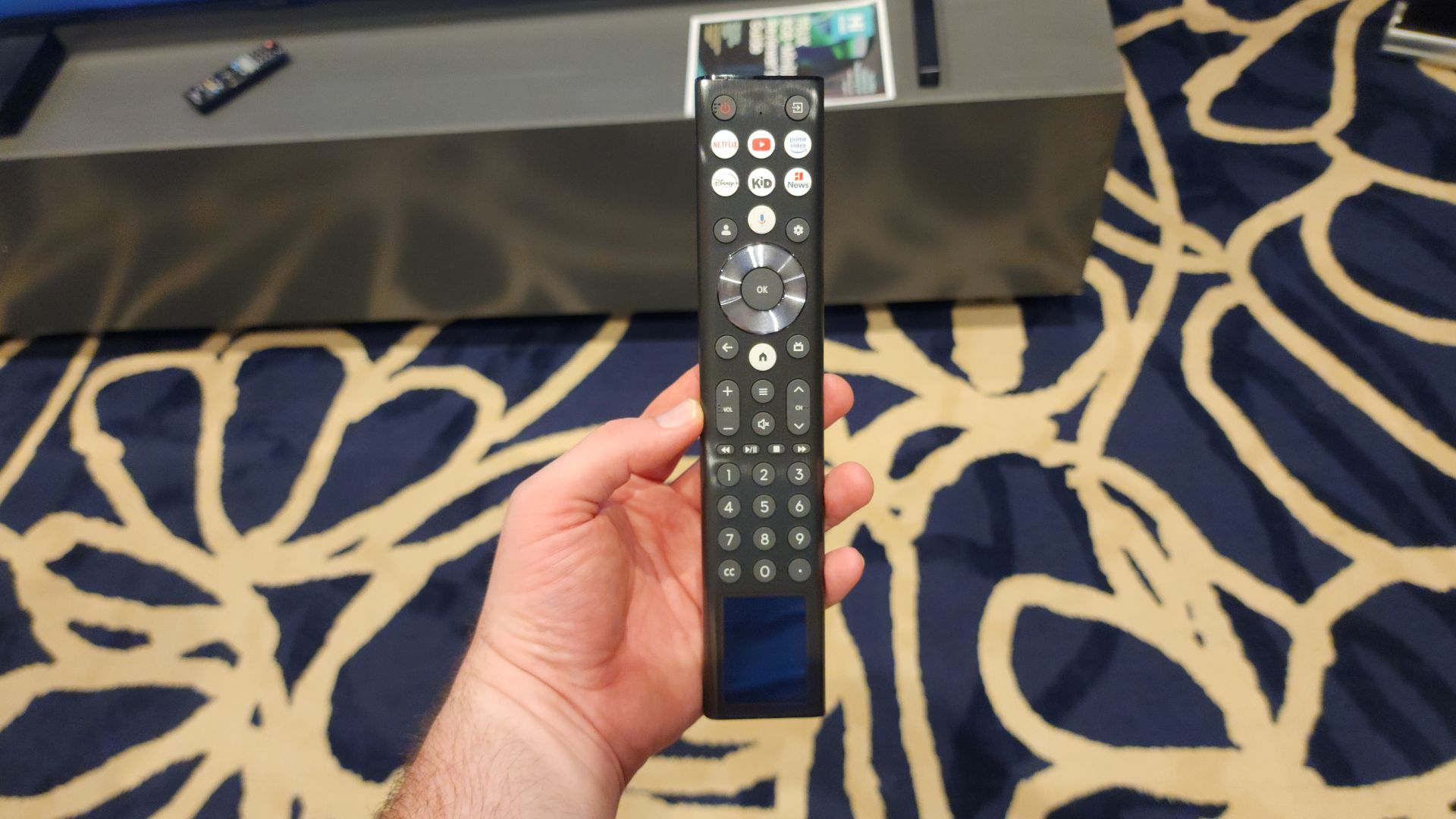
Even so, the 116UX isn’t immune to the viewing-angle problems that afflict all LED TVs, including the 116UX – though it has an unexpected benefit here. Its sheer size means you can fit a lot more people directly in front of the screen without them having to sit at extreme angles and view a washed-out picture. I had to get 15-20 feet away from the corner of the TV before it really became a problem, so this is not something most people will face.
Nor will they have to worry about reflections or glare, since that Anti-Reflection Pro technology really did the trick, diminishing both to the point of near invisibility, even when the room’s overhead lights were on full strength.
One last thing I want to mention is the remote control. It’s a new, striking design that includes a maximum of buttons on its black brushed-metal frame and, as Samsung did a couple of years back, incorporates a solar panel for charging (though you can also connect it to the USB-C port Hisense has added to the TV’s left edge). It looks beautiful, it works well, and it’s a fitting complement for the 116UX as a whole.
Large and in charge
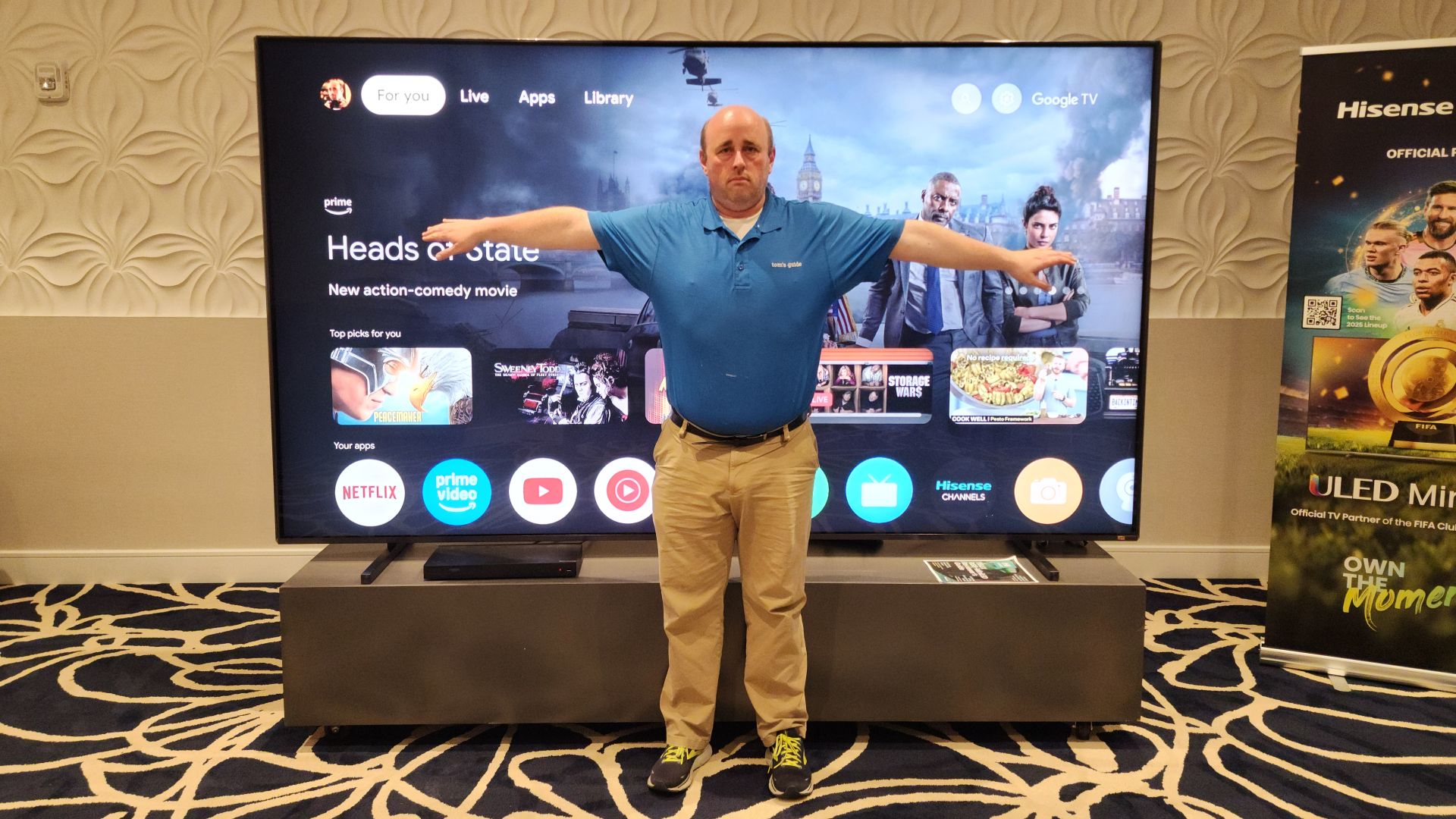
The 116UX delivers on almost all of Hisense’s bold promises, rendering BT. 2020 color more accurately than any other TV I am aware of, and its high brightness and swath of interesting technologies mean it will excel when watching most things. If the TV's slight trouble handling frenetic action is less than ideal, it may not be a deal-breaker depending on what you watch, and, as my time with the set was extremely limited, it may not apply in all cases.
There’s no getting around the fact that a truckload of caveats necessarily accompanies the 116UX: if you can afford it, if you can get it in your house, if you have a room big enough to due justice to its Wyoming-class screen size. Those will have to be addressed before you even consider buying it. But if you can, the 116UX might be the quasi-luxury purchase you’ve been waiting for – and one of the best ways to literally bring a movie theater home.
You might also like...
Matthew Murray is the head of testing for Future, coordinating and conducting product testing at Tom’s Guide and other Future publications. He has previously covered technology and performance arts for multiple publications, edited numerous books, and worked as a theatre critic for more than 16 years.
You must confirm your public display name before commenting
Please logout and then login again, you will then be prompted to enter your display name.